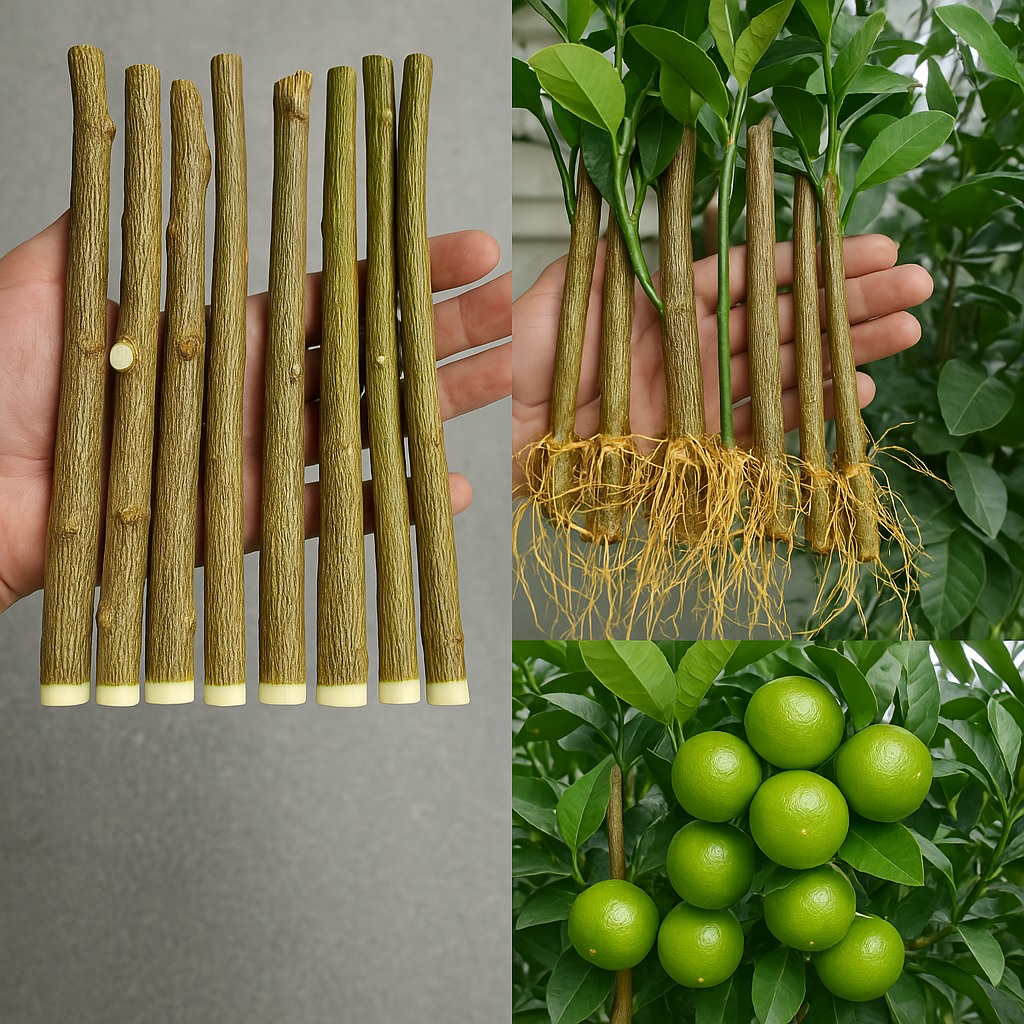ADVERTISEMENT
Here’s how to choose a good cutting:
– The branch should be approximately **4-6 inches long** and have several **leaf nodes** (the spots where leaves grow).
– The cutting should be free from any disease, pests, or damage.
– Make sure the cutting has a few **healthy leaves** and no visible signs of mold or rot.
Using a **sharp knife or pruning shears**, cut the branch just below a node. This node is where the roots will eventually emerge.
### **Step 2: Trim the Cutting**
Once you have your cutting, you’ll need to trim it slightly. Cut off any leaves that are close to the base of the cutting to ensure that the bottom part of the cutting remains clean and free of interference when it’s placed in the water.
Leave a few leaves at the top of the cutting, as these will help the plant maintain moisture and promote photosynthesis.
### **Step 3: Optional – Apply Rooting Hormone**
While not strictly necessary, using a **rooting hormone** can help encourage faster root development. Rooting hormones contain plant growth regulators that stimulate root formation. If you have some on hand, dip the cut end of the branch into the hormone powder or gel before proceeding.
### **Step 4: Prepare the Toilet Paper**
Take **2-3 sheets of toilet paper** and fold them together to create a thick, absorbent layer. Wet the toilet paper thoroughly with water, making sure that it’s moist but not dripping. The toilet paper should be damp enough to hold moisture around the cutting, but it shouldn’t be soggy.
### **Step 5: Wrap the Cutting**
Place the cut end of the branch on the dampened toilet paper, ensuring that the area where roots will grow (just below the node) is well-covered. Gently wrap the toilet paper around the base of the cutting, ensuring that it’s securely in place. You can use a small **rubber band** to hold the toilet paper in place if needed.
### **Step 6: Place the Cutting in a Container**
Now that the cutting is wrapped in toilet paper, it’s time to place it in a container. You can either place it in a small **bowl** or **plastic container** or use a **plastic bag** to create a mini greenhouse effect. If you’re using a plastic bag, make sure it’s clear so that light can reach the cutting.
To ensure that the cutting gets the best environment, place the container in a warm, humid location with plenty of indirect sunlight. A spot near a windowsill with bright but indirect light is perfect. Avoid direct sunlight, as it could cause the cutting to dry out.
### **Step 7: Wait for Root Development**
Now comes the waiting game. Over the next **2-4 weeks**, check the cutting regularly to ensure that the toilet paper remains moist and the cutting is not drying out. You should start to see small roots developing from the node, and the leaves may begin to droop or yellow, which is a natural part of the rooting process.
If the toilet paper starts to dry out, simply wet it again with a small amount of water. However, avoid soaking it, as the cutting still needs to breathe.
### **Step 8: Transplant the Cutting**
Once the cutting has developed enough roots (typically after 2-4 weeks), it’s time to transplant it into a small pot with **well-draining soil**. Gently remove the toilet paper and plant the rooted cutting in the pot. Be sure to plant the cutting deep enough to cover the root system but leave the top portion with the leaves above the soil surface.
Water the newly transplanted lemon tree cutting thoroughly, and place the pot in a bright spot with indirect light.
—
## **Care for Your New Lemon Tree**
Once your lemon tree cutting has successfully rooted and been transplanted into soil, it’s important to continue caring for it as it grows. Here are a few tips to ensure that your lemon tree thrives:
### **1. Watering**
Water your new lemon tree regularly, but don’t overwater it. Lemon trees like their soil to be moist but not soggy. Allow the top inch of soil to dry out between waterings, and always ensure that your pot has drainage holes to prevent water from accumulating at the bottom.
### **2. Sunlight**
Lemon trees need plenty of sunlight to grow strong and healthy. Aim to provide your tree with at least 8 hours of bright, indirect sunlight per day. If you’re growing it indoors, consider using grow lights during the winter months when natural sunlight is limited.
### **3. Fertilizing**
Feed your lemon tree with a balanced, slow-release fertilizer every 6-8 weeks during the growing season. You can also use a liquid fertilizer diluted to half strength. Avoid over-fertilizing, as this can harm the tree.
### **4. Pruning**
Prune your lemon tree regularly to encourage healthy growth and shape. Trim off any dead or damaged
branches and remove any suckers that grow from the base of the tree.
—
## **Conclusion**
Growing a lemon tree from a cutting with the toilet paper method is a simple, effective, and low-cost way to propagate a new tree. By utilizing this method, you’re able to quickly develop healthy roots and start a new tree that will provide years of fruit and enjoyment. It’s a rewarding process that allows you to create your own lemon tree from scratch, whether you’re looking to grow a tree for your garden or enjoy fresh lemons from a container on your balcony.
With patience, care, and the right environment, you can watch your lemon tree flourish, and you’ll soon be able to enjoy the benefits of growing your own fruit right at home. Happy gardening!
